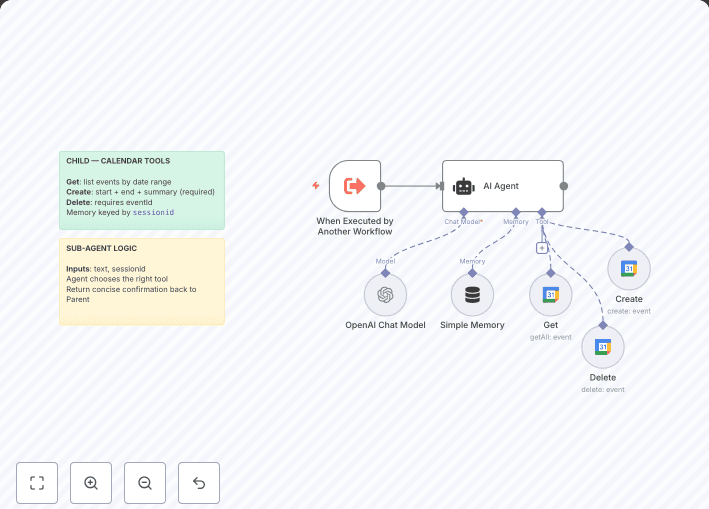👥 Who Is This For?
Content creators, marketing teams, and channel managers who want a simple, hands‑off solution to upload videos and automatically generate optimized metadata from video transcripts.
🛠 What Problem Does This Solve?
Manual video uploads with proper metadata creation is time‑consuming and repetitive. This workflow fully automates:
- Monitoring a specific Google Drive folder for new video uploads
- Seamless YouTube upload processing
- Transcript extraction for context understanding
- AI‑powered generation of titles, descriptions, and tags
- Metadata application to uploaded videos without manual intervention
🔄 Node‑by‑Node Breakdown
| Step | Node Purpose |
|---|
| 1 | New Video? (Trigger) – Monitors specified Google Drive folder |
| 2 | Download New Video – Retrieves the video file from Google Drive |
| 3 | Upload to YouTube – Uploads the video to YouTube with initial settings |
| 4 | Get Transcript – Extracts transcript from the uploaded video |
| 5 | Adjust Transcript Format – Formats raw transcript for processing |
| 6 | Create Description – Generates SEO‑optimized description |
| 7 | YT Tags (Message Model) – Creates relevant tags based on content |
| 8 | YT Title (Message Model) – Generates compelling title |
| 9 | Define File Path Upload Format (Optional) – Structures data paths |
| 10 | Update Video’s Metadata – Applies generated title, description, tags |
⚙️ Pre‑conditions / Requirements
- n8n with Google Drive and YouTube API credentials configured (stored as n8n credentials/variables; no hard‑coded IDs)
- Dedicated Google Drive folder for video uploads
- YouTube channel with proper upload permissions
- AI service access for transcript processing and metadata generation
- Sufficient storage for temporary video handling
⚙️ Setup Instructions
- Import this workflow into your n8n instance.
- Configure Google Drive credentials; reference folder ID via n8n variable (do not hard‑code).
- Set up YouTube API credentials with upload and edit permissions.
- Specify the target Google Drive folder ID in the New Video? trigger node (via variable).
- Configure AI service credentials for transcript and metadata generation.
- Adjust message templates for title, description, and tag creation.
- Test with a small video file before production use.
🎨 How to Customize
- Modify AI prompts to match your channel’s tone and style.
- Add conditional logic based on video categories or naming conventions.
- Implement notification systems to alert when uploads complete.
- Create custom metadata templates for different content types.
- Include timestamps or chapter markers based on transcript analysis.
- Add social media sharing nodes to announce new uploads.
⚠️ Important Notes
- Video quality is preserved through the upload process.
- Consider YouTube API quotas when handling multiple uploads.
- Transcript quality affects metadata generation results.
- Videos are initially uploaded without visibility adjustments.
- Processing time depends on video length and transcript complexity.
🔐 Security and Privacy
- Store API credentials and folder IDs as n8n Credentials/Variables—remove any hard‑coded tokens or IDs.
- Video files are processed temporarily and not stored permanently.
- Limit Google Drive folder access to authorized users only.
- Manage YouTube upload permissions carefully (use OAuth/service accounts).
- Ensure compliance with organizational data‑handling policies.


